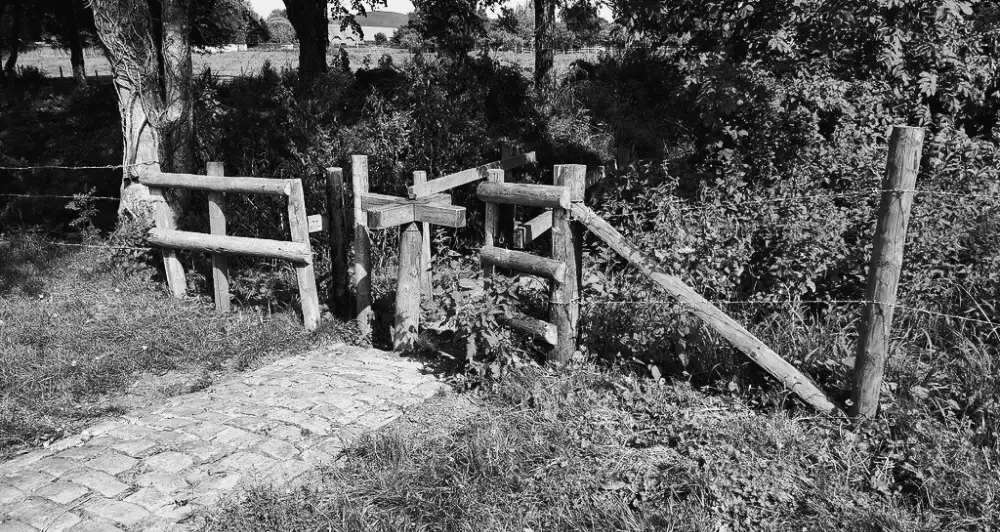While the beginnings of England’s Industrial Revolution made its cities blossom with steady economic growth throughout the 18th century, in the countryside, even farmers were inspired by this Zeitgeist of change and modernity. No wonder that one of them invented what is today known as the turnstile!
Of greedy cattle and creative farmers.
To successfully fence off herds of cows, sheep, and goats from lush crop fields, dangerous predators, or neighbouring animal groups, farmers usually built solid rock walls around their property borders. In order to make going from one field to the other more effortless, two-step-stiles, that only allowed one human at a time to fit through, were installed. While this system worked well to secure animals, a smart farmer must have grown tired of walking up and down the steps, and decided to push his stile game to the next level. By simply plunging a wooden post into the ground and connecting it with a spiked cross on top (resembling the propeller of an airplane – an invention that was only made in 1843!), the first turnstile in action was born amidst cobs, cattle, and corn.
In today’s modern world, turnstiles are part of almost every aspect of life.
From metro stations to office buildings – since their humble invention, turnstiles have clearly proven their value in managing crowds over the centuries. It is almost impossible to think of any form of modern public entrances that function without the help of mechanical or electronic turnstiles. While its mechanism has evolved from a simple wooden device in the countryside to a sophisticated and digitally connected solution that seamlessly communicates with a database in just milliseconds, its original purpose remains the same: ensuring safe and proper access.
Motwane – India’s leading brand for Entrance Control Solutions
With decades of learning and experience, our commitment to innovation has made us the country’s go-to brand. At Motwane Entrance Control, we believe in Research and Development, and are proud leaders in the Indian turnstile segment. Learn more here about our history!




